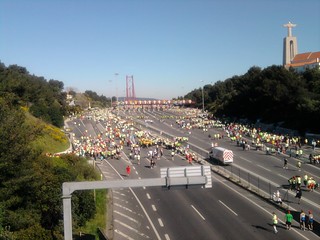In the beginning God created the heavens and the earth, then there was the Apache HTTP Server and afterwards PHP. Back in those ages, i was split between CGIs and mod_php. So the usual URL was something as http://www.mydomain.com/cgi-bin/script.pl?do=this or http://www.mydomain.com/script.php?do=that. It was simply a direct link between script.pl and script.php and a file in the filesystem … also it was ugly as hell…
I was not happy with this at all… and besides, just to make my days more miserable, some websites had perfect URLs, like:
http://www.mydomain.com/product/my_product
http://www.mydomain.com/product/my_other_product
so… i put myself to work to emulate this. First, i tried, to use a directory system and take advantage of the auto-index feature, as the index file is automatically served by the server. Ex:
http://www.mydomain.com/product/my_product/index.html
http://www.mydomain.com/product/my_other_product/index.html
but you could actually access them the way i wanted
http://www.mydomain.com/product/my_product
http://www.mydomain.com/product/my_other_product
This was of course a bad nightmare to maintain, not even to speak about database driven websites and related problems, template problems… nightmare…. So, i moved along to PHP auto prepend feature, the idea was to catch the user request by a php file (that is prepended to each request) do all the parsing and display and then kill the normal page processing. Better, but not quite there yet….
Then i discovered Apache mod_rewrite, and everything made sense, all things, the universe, the meaning of life, even Flash programming (well maybe not Flash programming). With some simple rules i was able to catch the user request and filter the ones that i wanted to a central file (that i call handler.php) parse the request and send it to whatever file/module that i want.
RewriteEngine on
RewriteCond %{REQUEST_URI} !\.(php|xml)$ [NC]
RewriteRule \.[a-z0-9]{1,}$ - [NC,L]
RewriteRule .* %{DOCUMENT_ROOT}/handler.php [L]What are we doing here is quite simple but at the same time powerful. With these rules, all requests with file extension (.gif, .png, .js, .css, etc, etc), usually static content, are directly served as normal (line 3), except for the requests with .php and .xml extension that are sent to the “handler.php” (line 2), if we want other extensions to be sent to dynamic parsing, ex: server side generated image, just add them in this line.
Then a stripped down handler.php file is something like this
// configurations
require('config/vars.inc.php');
require('config/bd.inc.php');
// session start
session_name(SESSION_NAME);
session_start();
// outputt buffering
ob_start();
// get script parts
$uri = $_SERVER['REQUEST_URI'];
$tmp = explode ("?", $uri);
if (! isset($tmp[0])) $tmp[0] = '/';
$script_parts = explode ("/", $tmp[0]);
// clean empty keys
$tmp = array();
foreach($script_parts as $key=>$row)
if ($row != '') $tmp[] = $row;
$script_parts = $tmp;
// default
if (! isset($script_parts[0]))
$script_parts[0] = 'hp';
// Send to execution
switch ($script_parts[0]) {
case 'hp':
require($_SERVER['DOCUMENT_ROOT'].'/homepage.php');
break;
case 'products':
if (isset($script_parts[1])){
require($_SERVER['DOCUMENT_ROOT'].'/modules/products/detail.php');
break;
}
require($_SERVER['DOCUMENT_ROOT'].'/modules/products/cat.php');
break;
case 'php':
phpinfo();
break;
default: // 404 error (not found)
header("HTTP/1.0 404 Not Found");
require($_SERVER['DOCUMENT_ROOT'].'/templates/error404.php');
}Simple, include all the global stuff, start sessions, database links, etc… get the URL request, parse it and send it to whatever file for processing. But as always you can/should build from here, change it to your needs and/or style, put your secret ingredient, do it better for yourself.
Some (many) years ago i would kick some ass to read this post and get this info on a silver plate.




